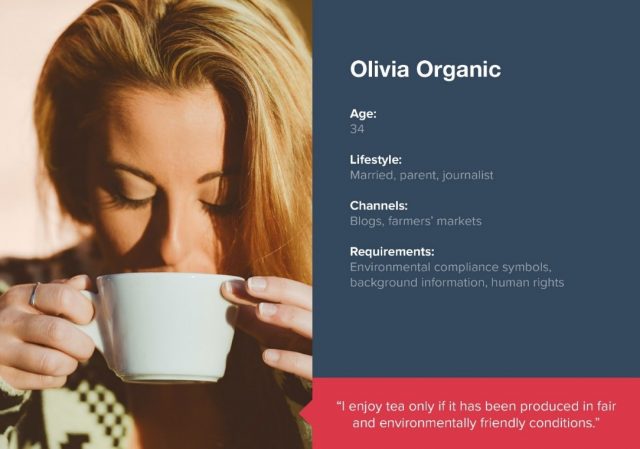“Who is my target audience?” – This is one question that merchants should ideally consider before they even open a retail operation. Admittedly however, it can be hard to rest on a simple answer, particularly at the beginning. Even so, it remains a worthwhile exercise. You should therefore take time to think about your target audience in some depth. Explore the following aspects to help you define your target audience:
- Trying to keep everyone happy will not work
You are unlikely to succeed simply by opening a shop, offering products and hoping to find sufficient customers among the mass of shoppers. A policy of specialization is much more likely to bring success – both in respect of your product range and also in terms of the group of people you aim to buy your goods. Focus your retail activities on a particular group of customers and tailor your offerings to their likely requirements.
2. Knowing the outlets frequented by your target audience
Whether in the sense of Google, Facebook and blogs, or trade fairs, farmers’ markets and the gym – knowing where your audience regularly spends time is invaluable. It can make deciding which marketing activities to use that much easier. For example, if your target audience is very active on Facebook, an investment in Facebook advertising might be the right approach to take. On the other hand, if your audience frequently searches for information using Google, you could achieve a great deal by ensuring your shop is placed higher in the Google rankings.
3. Focusing on relevant topics and channels
What is the most important way for your target audience to get information? Answering that question can save you a lot of time and money. Whether you opt for newsletters, social media posts or package inserts, these can all be effective marketing tools. They will only work, however, if they are the right tools for your particular audience. Remember the following rule: rather than trying to exploit every opportunity, concentrate instead on selected activities.
4. Speaking the same language
Humorous, serious, precise or playful – which tone of voice best suits your target audience? Take care to ensure that you use the chosen style of language consistently in your communications. After all, if visitors to your shop feel that you are not addressing them properly, they only have to click once to shop in another store instead.
5. Discovering what motivates your target audience
What are the main reasons why people visit your shop? Perhaps your audience specifically chooses your shop when searching for gifts? In that case, it could make sense to use part of each newsletter to showcase gift ideas comprising one or more products from your range. Your homepage can also be a good place to alert visitors to possible gift ideas in an eye-catching way.
The appropriate time for analysing your target audience
Proper analysis of your target audience will take some time. By embarking on this task early, you can ensure that your shop is oriented to the needs of your prospective customers right from the outset. In this context, the category structure, layout of your home page and the search filters used can all play an important role.
Despite the time and effort associated with audience analysis, investing time and resources in the process is worthwhile. You will then find it much easier to plan campaigns efficiently or respond to customer requirements. Addressing customers in a targeted way can have an especially positive impact on your sales figures.
“Personas” as a helpful tool for audience analysis
Modern retailers have learnt that creating theoretical “personas” can be extremely useful. These are fictional characters used to represent a particular set of customers. They are described on the basis of factors such as age, gender, family status, income, place of residence, job, interests and hobbies. In addition, criteria such as purchasing behaviour and favourite locations – both offline and online – can help you to define your target audience better. It is also essential to set down in a brief statement on why a particular group visits your shop.
Even if such personas are only fictional characters, thinking intensively about how to satisfy their needs will assist you in your day-to-day work. They will give you an insight into the needs and behaviours of your customers. This will provide you with a better understanding and feel for your target audiences. You will then find it easier to successfully address your customers and to optimize your shop.
Creating personas: the first steps
Real-life information forms the basis for creating your personas. This is why it is important as a first step to gather as much information as possible on your target audience. To do this, make contact with some customers. You can interview individual customers, hold face-to-face conversations at trade shows, or set up an online survey in which visitors to your shop can take part. Similarly, chatting within topic-specific forums and Facebook groups can be opportune. It can also be useful to consult data from your own shop or from general market data.
Representing all possible customer types to use your shop using is, of course, unrealistic in practice. You should therefore concentrate on developing a maximum of three to five fictional characters. These will describe your primary target audiences and their most important requirements. On the basis of these, you can really focus down on your most important customer groups.
My tip: an interview script
In order to create personas successfully, it is vital to ask open questions. In this way you will learn as much as possible about your interviewees’ requirements and attitudes. To ensure you can properly compare and analyse the results you obtain, we suggest here a brief script for you to follow, including some important questions:
- How did you find out about our shop?
- Is there anything particular about our online shop that you appreciate?
- How often do you make a purchase from us?
- When you are looking for product X, where do you normally get your information?
- How could we improve your purchasing experience with us?
- What products do you feel are missing?
You should also try to capture some demographic data:
- How old are you?
- What job do you do?
- Where do you live and how would you describe your lifestyle?
Another tip: only ask questions that will supply you with valuable information that you really need. This is because the shorter you keep the interview, the more willing people will be to take part.
Here, for example, are two fictional personas who visit a shop selling tea.
Learning from personas: evaluation and actions
Initially, it makes sense to bring all of the data into a standard form and sort the information by topic area. You can then begin to identify common features and differences and create a “persona map”. This will ensure you have sight of the most important information as you work. Take care always to see things from the perspective of the persona. Doing this will help you to exclude your own biases, wants and needs about your shop.
If we analyse the two personas above, we can determine some really useful focused offerings and marketing tactics that would likely be particularly effective for addressing them both. For example:
For addressing Deborah Detox:
- Offer varieties specially blended for detox
- Write blog articles about ‘teatox’ experiences
- Offer quantity discounts and express deliveries
- Create Pinterest campaigns
For addressing Olivia Organic:
- Display environmental compliance symbols prominently
- Offer tea tastings and seminars
- Distribute flyers at farmers’ markets
What is important for your customers? Perhaps you already have a few ideas about who the main personas for your shop could be? In any case, we hope you enjoy finding out all about your target audiences’ needs and consumer behaviours.
Find a Home-Based Business to Start-Up >>> Hundreds of Business Listings.



















































